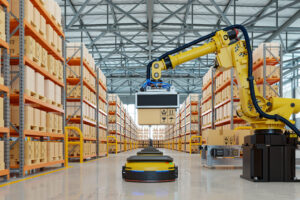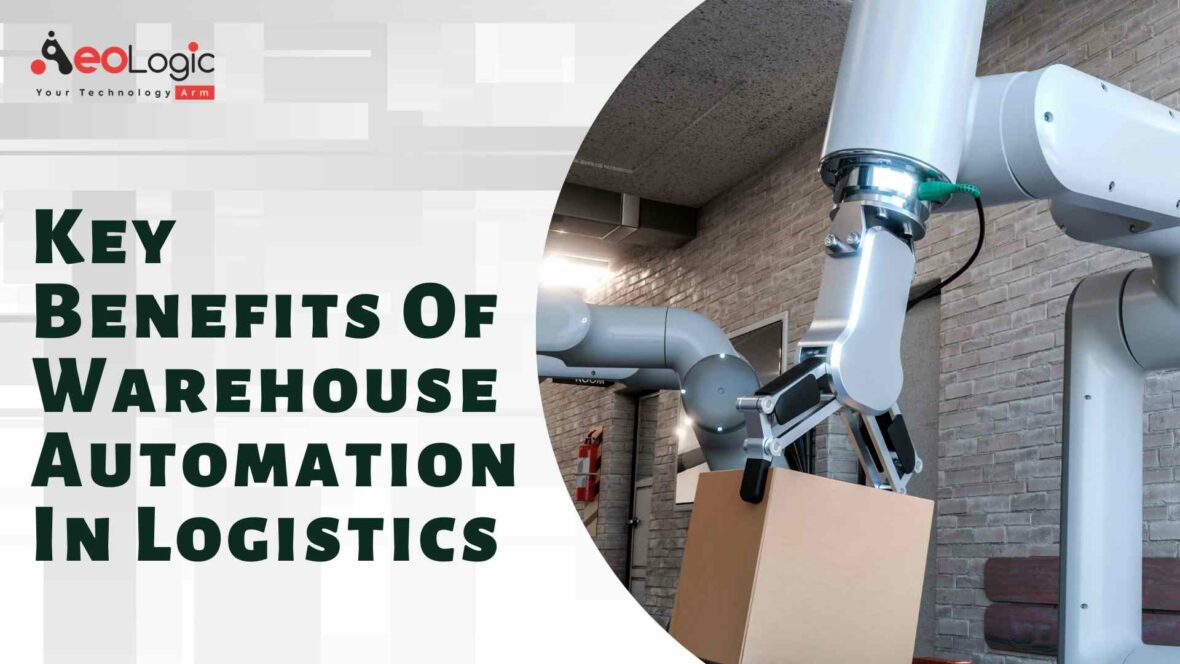The process of automating the movement of inventory into, within, and out of warehouses to consumers with minimal human assistance is called Warehouse automation. There are numerous benefits of warehouse automation. As part of an automation project, a business can eradicate labor-intensive tasks that include repetitive physical work and manual data entry and analysis.
For instance, a warehouse worker may load an autonomous mobile robot with heavyweight packages. The robot then moves the inventory from one point in the warehouse to the shipping area. And software tracks the movement of that inventory, keeping all records present. These robots are improving the efficiency, speed, reliability, and accuracy of this task.
Warehouse Automation Statistics and Trends
Warehouse automation will be helping in addressing insufficient warehouse space, inefficient inventory operations, and labor shortages. Subsequently, online retail sales of physical goods are projected to reach 500 billion dollars. Thereby, improving warehouse services demands.
Even, more than 90% of warehouse operators are reporting that cost-cutting measures are imperative to successfully balance the requirement for increased space and services. As well as the difficulty of hiring and retaining qualified employees to meet the demands. Failing to strategize for these trends might be costing more than the expenses associated with warehouse automation.
Also read: RFID for Asset Tracking and Inventory Management
Benefits of Warehouse Automation
Efficiency and customer satisfaction
One of the major reasons why logistics companies and large retailers are investing in fully automated warehouse system development is to increase operational efficiency. And it also helps in better addressing the growing customer demands. Smart warehouse today has much higher throughput. Since it is immediately restocked and resupplied and facilitates in allowing for such services as same-day delivery.
Labour management
One of the major benefits of warehouse automation is labor management. It may seem backward. Rather than taking over people’s jobs, mobile robots and drones, for example, helping in cutting down on on-site commute time and do all the mundane work. It is enabling organizations to better manage and employ human skills in warehouse operations.

Safety
Improving safety for people and product alone is enough for considering warehouse automation technology development. For instance, handling heavy pallets and high racks, operating in high-traffic environments, and, sometimes, working with toxic products (e.g. chemicals). Today’s robots can do most of these jobs thus minimizing risks for employees.
Fewer errors
There are several different applications for automated inventory. A few of them are standalone systems such as mobile apps and fleets of drones equipped with barcode readers. Others are part of larger automation warehouse management systems. Either way, the primary target of inventory automation is better precision and control over storage and product. This is, in fact, one of the biggest benefits of warehouse automation. Since error-free inventory ultimately translates into the lessening of losses and waste.
Optimized cost
Nonetheless, warehouse modernization projects are expensive. The reason for impressively fast ROI is multiple new saving points delivered by automation. Such as reduced labor cost, increased performance, optimized handling and storage cost, reduced inventory errors, eradicated risks of mishandling and product loss, etc. This is one of the warehouse automation leverages that carries measurable and tangible results. Therefore, often it is becoming the most important driver for warehouse modernization.
Fast scale-up
The best thing about warehouse automation technology or best warehouse automation solutions is that one can easily scale it up and down and quickly respond to changes in consumer demand. For example, retail brands don’t require to hectically double their personnel for the holiday season and deal with temporary employment. Rather, they can tweak schedules and reprogram their fleets for managing higher input and output. All while employees can focus on more customer-centric activities such as holiday packaging, customer service, etc.
Higher resilience
Highly automated warehouses are having an edge when the pandemic came because they were by default more resilient to unexpected changes. Long-term spike in demand for consumer products, sanitation, new safety, and social distancing measures are hitting hard on fully human-operated warehouses. The companies are engaging their fleets of warehouse vehicles and robots and controlling all the inventory.
Also read: How Did Foam Company Improve Warehouse Efficiency With RFID
Conclusion
Automation and data-driven operations are the basis of warehouse efficiency today. Since, increasing demand, booming eCommerce, and stringent competition are making nearly every storage, logistics, and retail company consider integrating warehouse automation technology. Furthermore, the strategies they are choosing, however, vary greatly depending on scale and budget.
If you are looking for a tech team for helping you in implementing your warehouse automation project, drop us a message at support@aeologic.com.
FAQs
What technologies are helping in automating warehouse management?
The tools and scope for warehouse automation are relying on unique business demands and goals. Warehouse Management Systems (WMS), drones, robots, automated vehicles, and advanced data analytics are some of the most common technologies that are driving automation in warehouse management.
How to build a custom warehouse automation system?
Custom warehouse automation systems should address your specific requirements and seamlessly integrate into your operations. Thus, it’s imperative, to begin with, in-depth research that helps in better understanding your business goals, gathering and prioritizing requirements, identifying constraints, studying an existing ecosystem, and developing an effective development strategy and roadmap.





